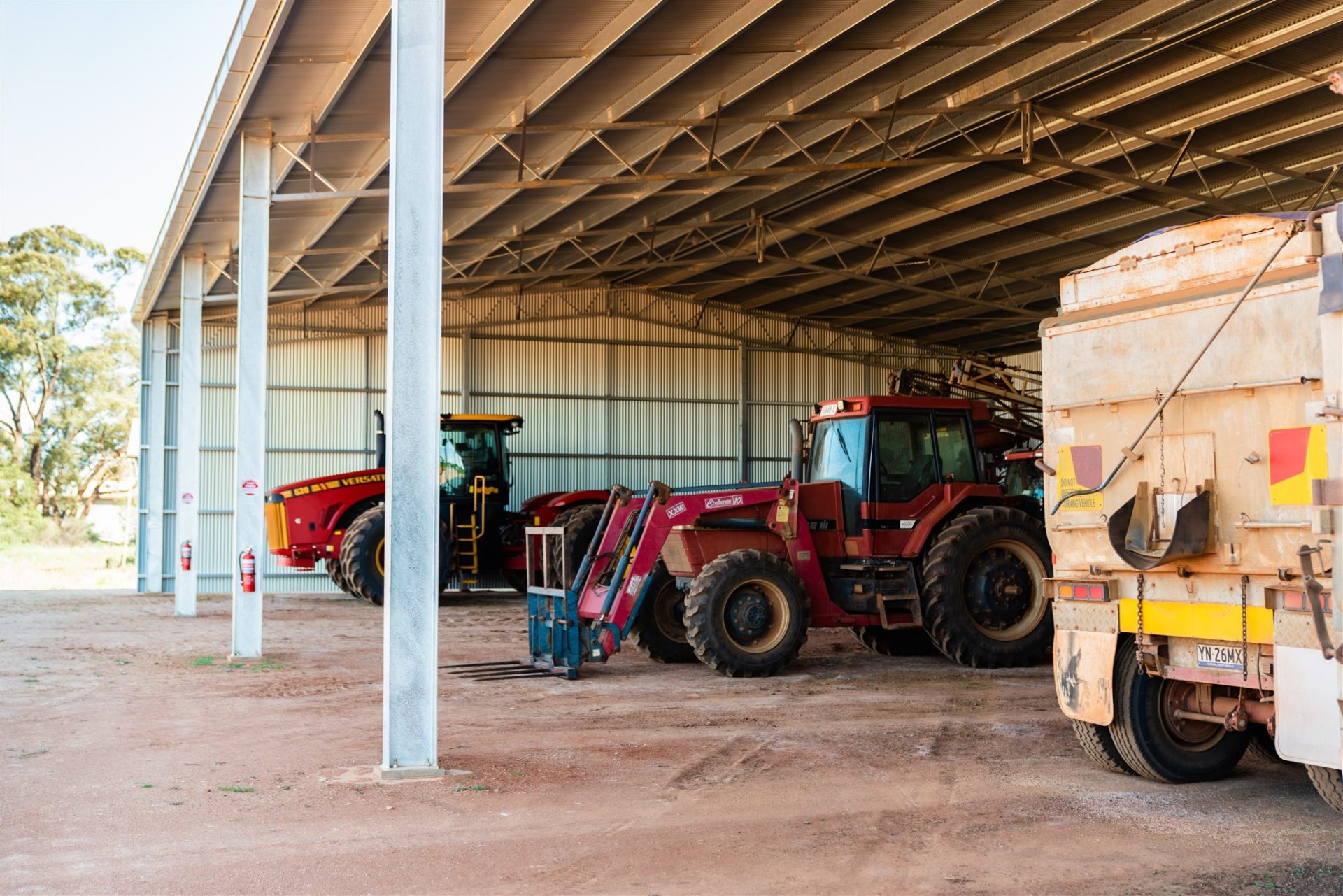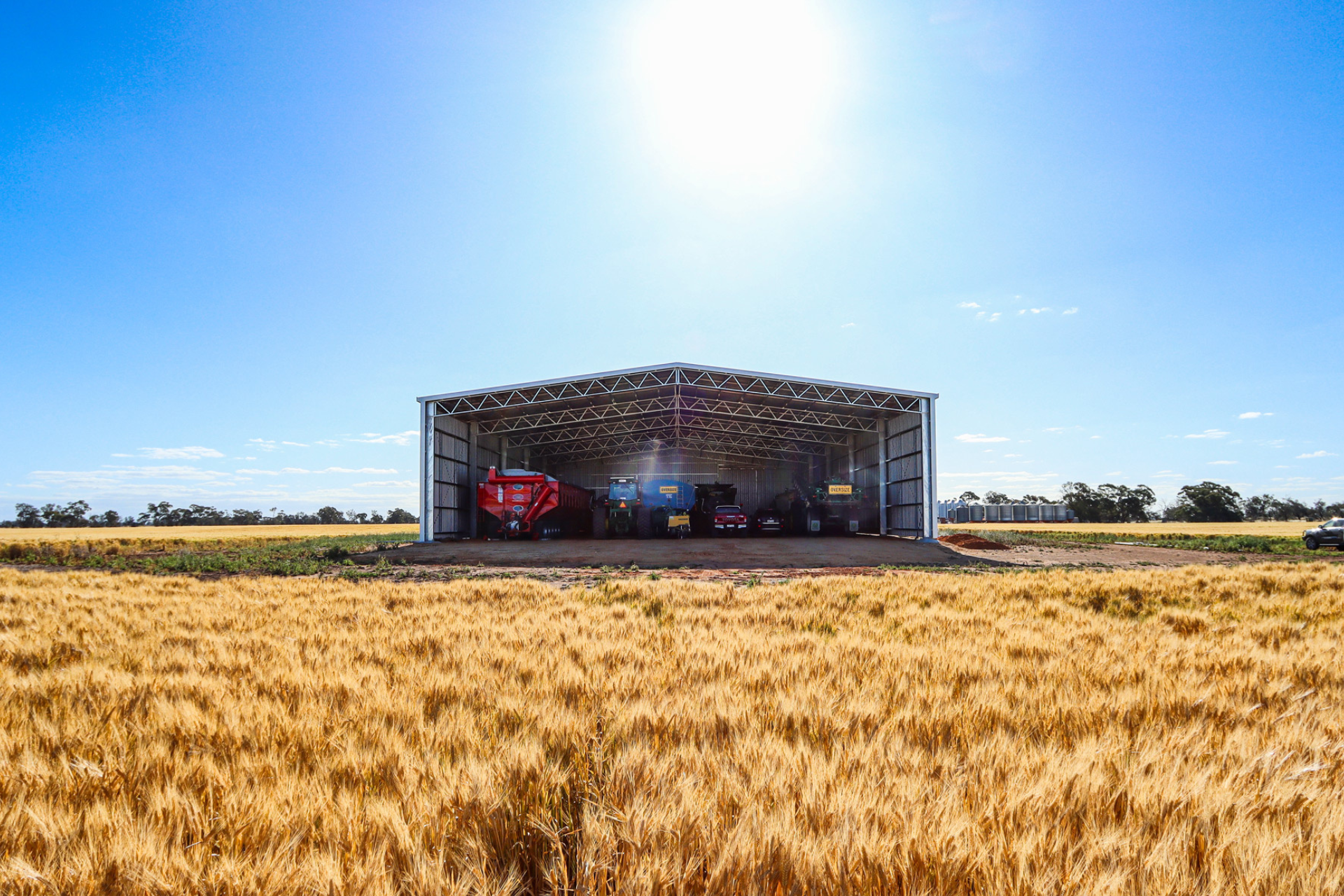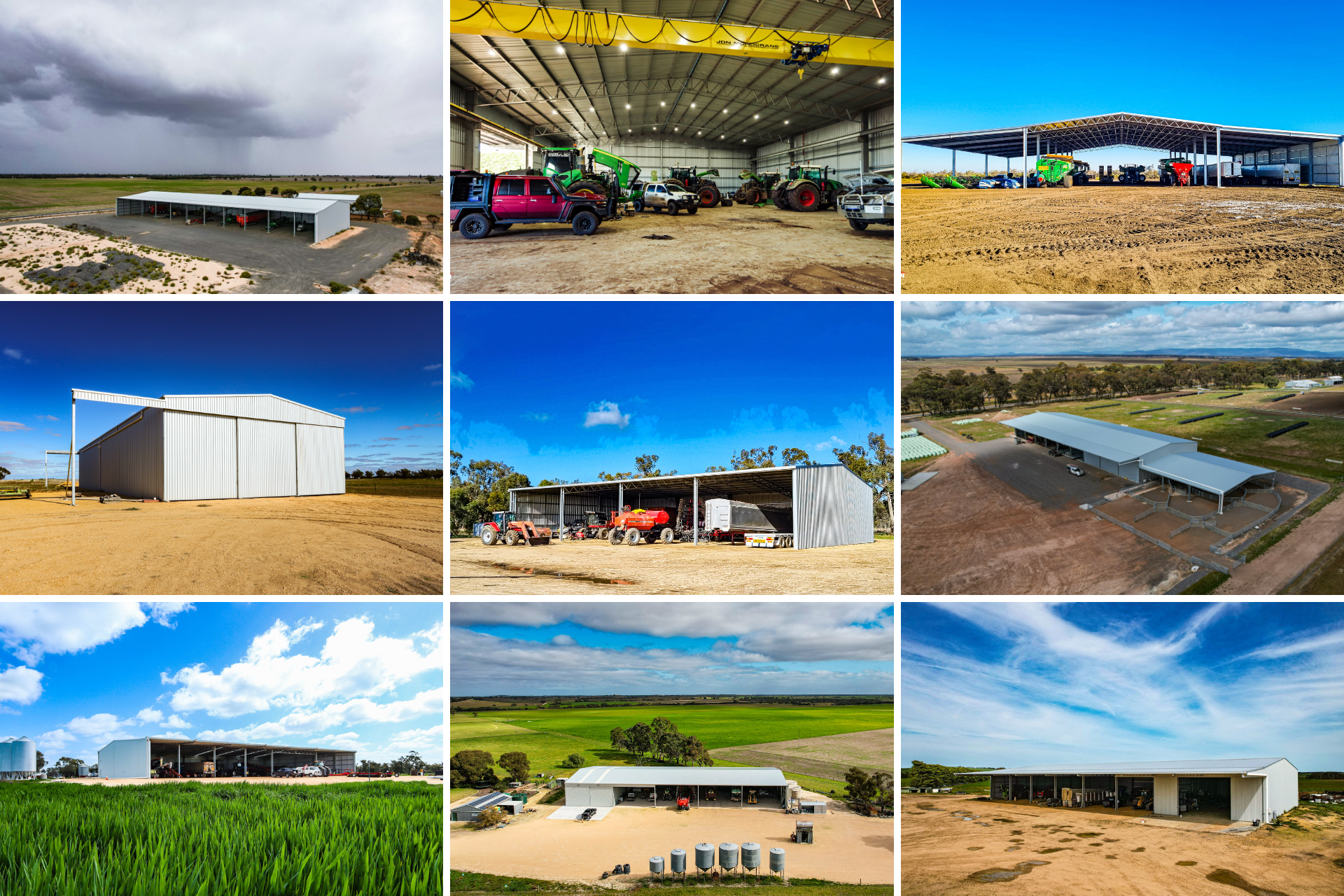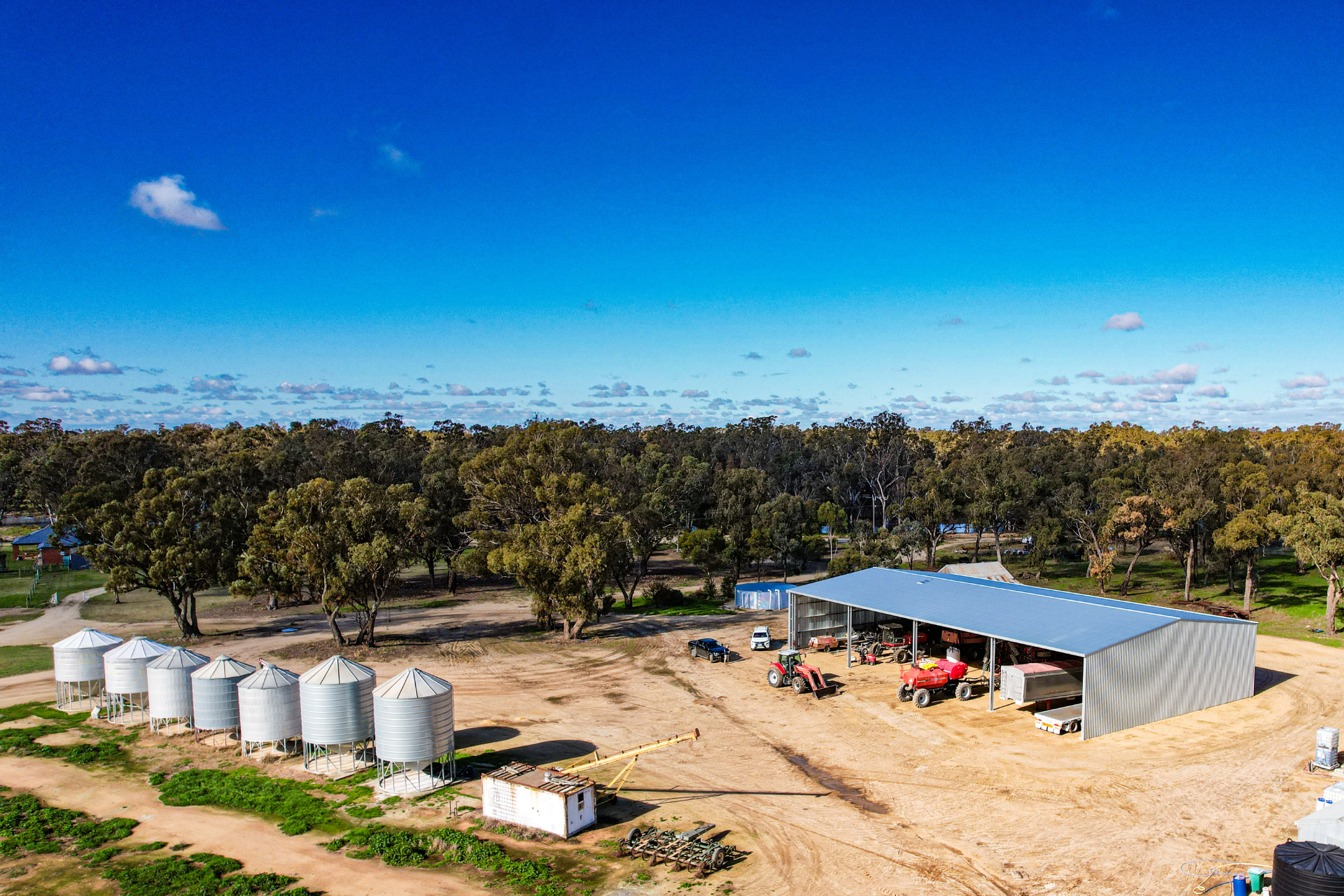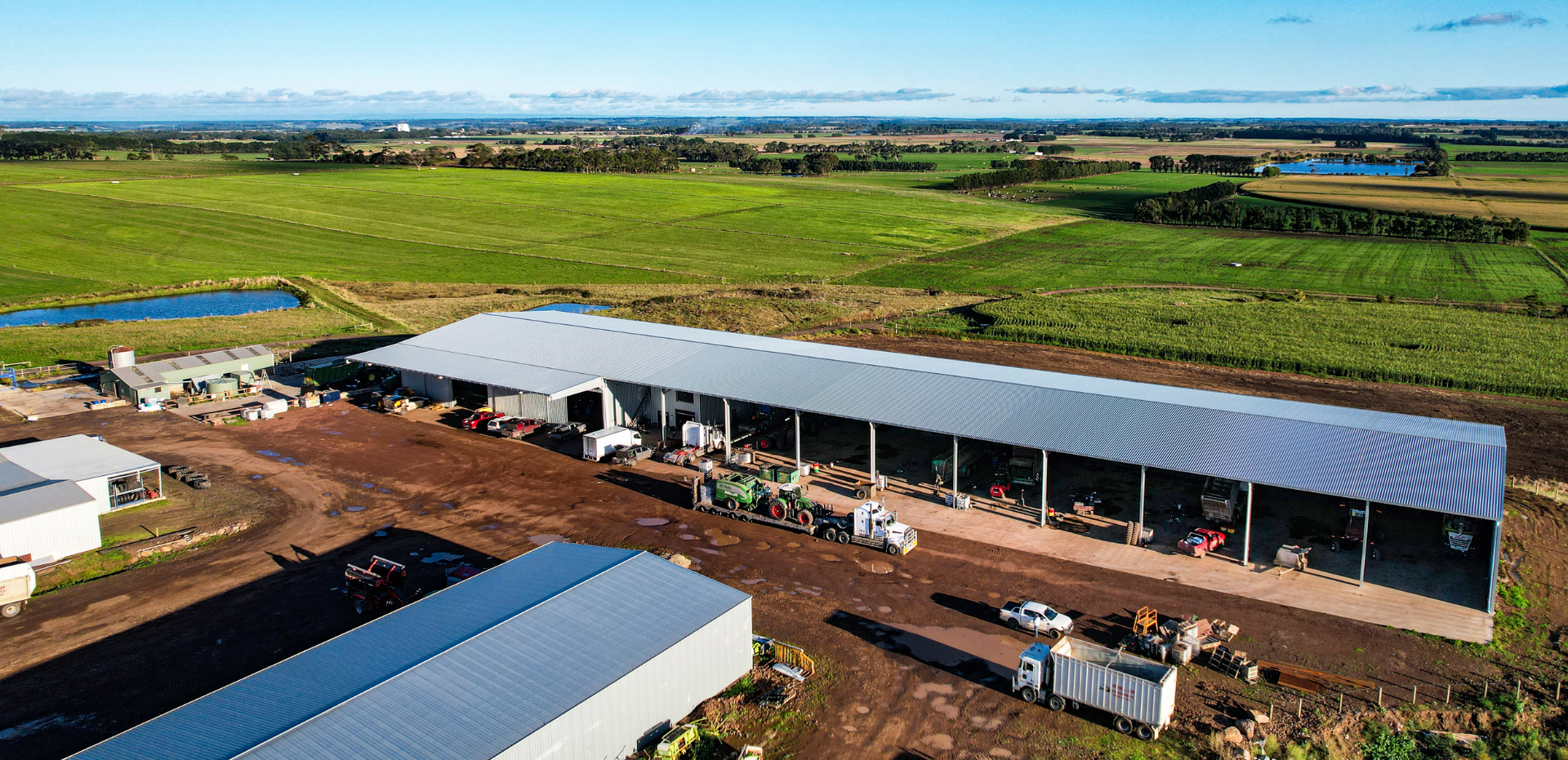Lack of space, poor access and pest damage are some of the most common machinery storage issues and can be incredibly frustrating as well as lowering productivity and creating unsafe working conditions.
We asked out building consultants about the most common machinery storage issues and what you can do about them – whether you are designing a new shed or updating an existing one.
Limited access
A poorly designed shed and site layout will make storing machinery a headache, particularly when storing large farm equipment or machinery that is difficult to reverse.
Here’s what you can do to avoid this issue:
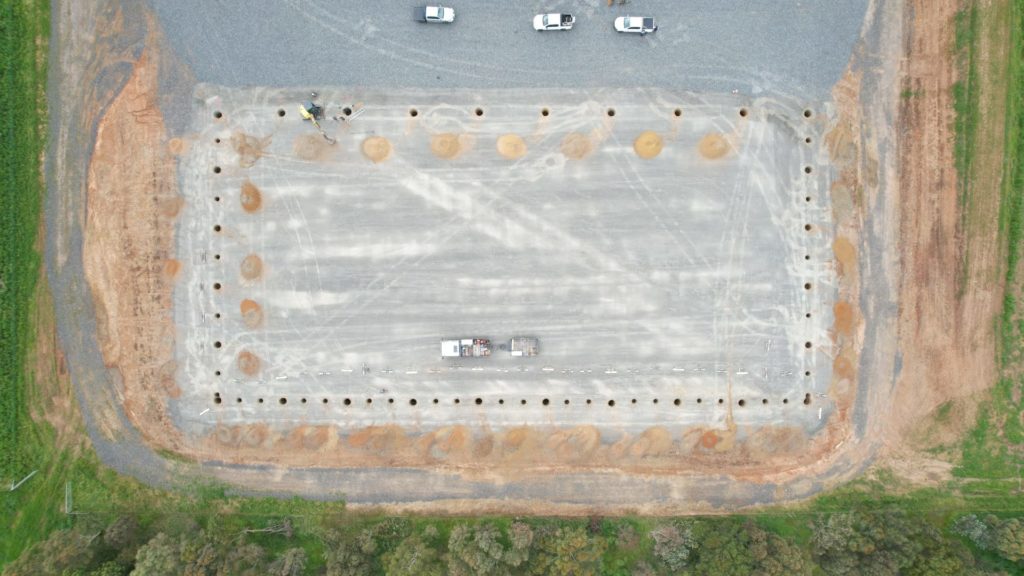
- Make sure you allow adequate area at the front of your shed for manoeuvring your machinery.
If the shed pad is too small you may find it difficult to pull into your shed straight on the first attempt, this will also cause damage to your shed pad – especially in the winter months.
To learn more about our top tips for site layout and preparation, read our article; How do I prepare the site for my shed? Or watch the video below.
- Choose the right shed design for the machinery you intend to store.
For example, standard 8 metre bays will not suit storing wide machinery such as header fronts. Instead look at including a girder truss to create a double bay opening or opt for a drive-through configuration for extra width. Learn more about the available machinery shed configuration in the video below.
Birds and pests
Birds and mice in your machinery shed are a nuisance, causing damage to your machinery and the paintwork.
Try these suggestions to help keep your shed pest-free:
- If you plan to put a concrete floor slab in your machinery shed, our building consultants recommend an in-fill slab.
The advantage of an in-fill slab is that the concrete will form around the contour of the cladding, helping to prevent pests from accessing the shed this way.
- It is a good idea to keep the shed as tidy as possible to limit nesting spots for pests.
- To make it more difficult for birds to nest inside your shed, roof purlins can be installed facing downwards. Other strategies to keep birds away include scare devices and laser repellents which you can read about here.
- Keep bait stations topped up to limit mice numbers. Check out this article from BCG for more mouse management strategies:
Unsafe working conditions
Inadequate lighting, poor workshop design, or a lack of an undercover workshop area all contribute to unsafe working conditions.
It is important to keep safety front-of-mind and remember that if anyone is injured on your farm due to unsafe working conditions, the responsibility lies on you.
Here are several suggestions to keep your machinery shed as safe as possible.
- Build the shed in a fool-proof location to prevent injury to your staff and limit any damage to your shed and equipment.
While this may not seem necessary, remember that other people that use the shed, for example, your staff, may not be as experienced with driving your equipment as you are.
- Ensure that all works, such as electrical works, done on the shed are completed by a qualified tradesperson.
We can also work with you to ensure that your new machinery shed meets regulations including fire design requirements and the correct proximity to powerlines.
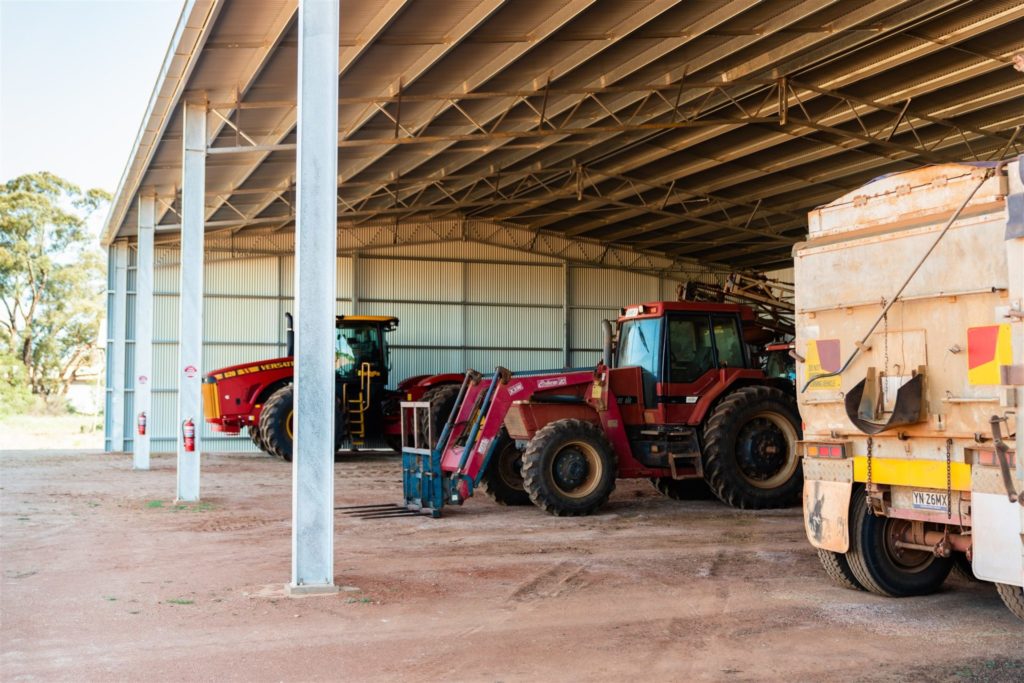
Lack of storage space
A lack of storage space might be the most common and frustrating machinery storage issue. Here are a few considerations to keep in mind when planning your machinery storage shed project.
- A shed can never be too big! The most common feedback from our clients is that they wished that they had built their shed another bay longer.
- While an extra bay can be easily added later on, a shed cannot be made higher, so it is a good idea to build your shed a little higher than you need right now to help future-proof your shed.
Keep in mind that if your shed has doors, your door clearance height will be approx. 600mm lower than the shed eave height due to the door beam.
- Discuss your storage requirements with us in the planning and design stage to avoid building a shed that will be too small for your machinery in a few years’ time.
Theft
Machinery storage that cannot be securely locked up or is located near a main road has a great risk of theft.
Some ways to make your machinery storage more safe and secure include:
- Store smaller implements in a lock-up section of the shed.
- Consider installing alarms and/or CCTV at access points on your shed and property.
- If possible store your machinery in areas which your regularly frequent and have your machinery stored out of site from the public.
Poor machinery storage can result in weather damage to parts and paintwork.
- To avoid weather damage to your machinery, consider installing doors or a canopy to your shed to prevent weather from coming into your shed.
The amount of weather coming into your shed does depend on which way your shed faces which is why it is important to choose the right orientation for your shed.
For more ways to prevent weather damage, read our article; how weather affects machinery and what you can do about it.

